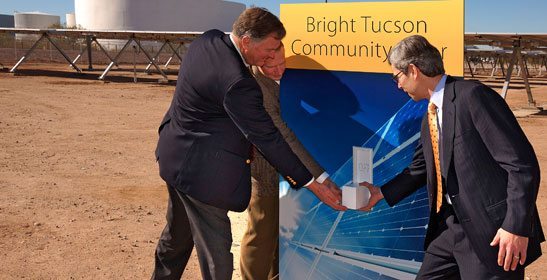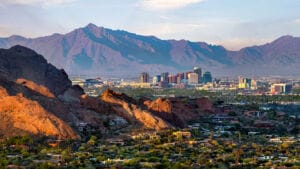Time For Change
Q&A with Joe Snell, president and CEO of Tucson Regional Economic Opportunities
Like the Valley, Tucson and Southern Arizona were hit hard by the recession. Joe Snell, president and CEO of Tucson Regional Economic Opportunities (TREO), talked to Arizona Business Magazine about the recovery and challenges still facing Tucson and the rest of the state.
How did Tucson and Southern Arizona fare during the recession?
Since December 2007, Arizona has lost nearly 300,000 jobs and in Southern Arizona about 30,000 jobs. Due to extreme state-level budget deficits, many of the assets and tools that allowed Arizona to compete have been cut drastically or eliminated. Arizona is facing a slow recovery from the worst recession in 70 years and lawmakers are faced with the urgent and challenging task of restoring jobs and creating an environment where we can compete and win.
Arizona is not alone in addressing recovery from the recession — other competitor states face the same challenges. However, our competitor states like New Mexico, Colorado, Texas and Utah have advantages we do not:
- Lower unemployment
- Greater investments in education and innovation
- Better business tax climates
- Better economic development tools
- Smaller deficits
 Fortunately, Arizona has a history of adapting and overcoming challenges. This year represents one of those times in history where we must use our collective strengths and advance Arizona. The recently passed Competitiveness Package is a good start.
Fortunately, Arizona has a history of adapting and overcoming challenges. This year represents one of those times in history where we must use our collective strengths and advance Arizona. The recently passed Competitiveness Package is a good start.
In this recovery phase, what are some of the bright spots you are seeing?
Many of TREO’s targeted industries in which we have strengths to compete for business development have held their own during the recession: biosciences, aerospace and defense and solar. In biosciences and aerospace and defense, TREO helped facilitate two major expansions in the last year here in Tucson:
- Roche/Ventana Medical Systems, 500 jobs, $184 million capital investment
- Sargent Aerospace & Defense
Our solar companies are consistently doing well and expanding too. SOLON Corp employs about 150 people in Tucson and is bullish on the future of solar in Arizona. The Solar Zone at the University of Arizona Tech Park continues to attract companies and development.
In September 2010, Global Solar rolled out a new flexible solar module, the PowerFLEX BIPV, which consists of Global’s CIGS modules laminated into 300-watt strips. The strips can be directly attached to rooftops with adhesive. That avoids the need for costly and heavy glass-clad panels and mounting frames.
What did TREO do for itself and its members in order to cope with the recession and now the recovery?
During the depths of the recession, we developed a very aggressive plan called Tucson: Job One. We have implemented much of this plan and continue to advocate for more tools and resources to help businesses. More recently we have developed an aggressive strategy to support and expand our aerospace and defense industry, which is a major contributor to Southern Arizona’s economy, with over 200 companies and $5 billion in revenue. The plan is in early stages, but includes exciting new discussions with public sector partners. The plan will be shared further in the coming months. Finally, our TREO investors have continued to support the organization, recognizing its critical role in these tough economic times. Our investor retention rate continues at 90 percent.
How do you see 2011 shaping up for Tucson and Southern Arizona?
The time is now to reshape our future economy, take some bold steps and emerge as the state everyone else aspires to be. What do we need to do to reshape our economy? Supporting industries that give us the greatest returns. Over the past 30 years, spurred by its climate and quality of life, the population growth rate of the Tucson region has far surpassed the nation as a whole. The region nears 1 million residents, and economists project that our population base will grow to 1.7 million by 2036. The rapid population growth has presented many challenging issues for the Tucson region, and will continue to do so in the future. Our region needs to provide services and infrastructure to meet the needs of these new families and residents. Equally important, we need to provide quality jobs and career opportunities so our current workforce, our children and new residents to the community can build the life they desire.
From an economic standpoint, industries like home building and construction have expanded along with the explosive population growth, resulting in an over reliance on these types of service and growth-related jobs to fuel the economy. As long as these non-primary jobs remain the main economic drivers, we will continue to suffer the consequences of a “population boom or bust” economy. Our current situation points out how important it is to diversify our economic engines. In order to build a more diversified economy we must create programs and policies that support those employers that value high skills and reward with high wages. Not all jobs and employers are equal. We must support those employers that give us the greatest return on investment.




